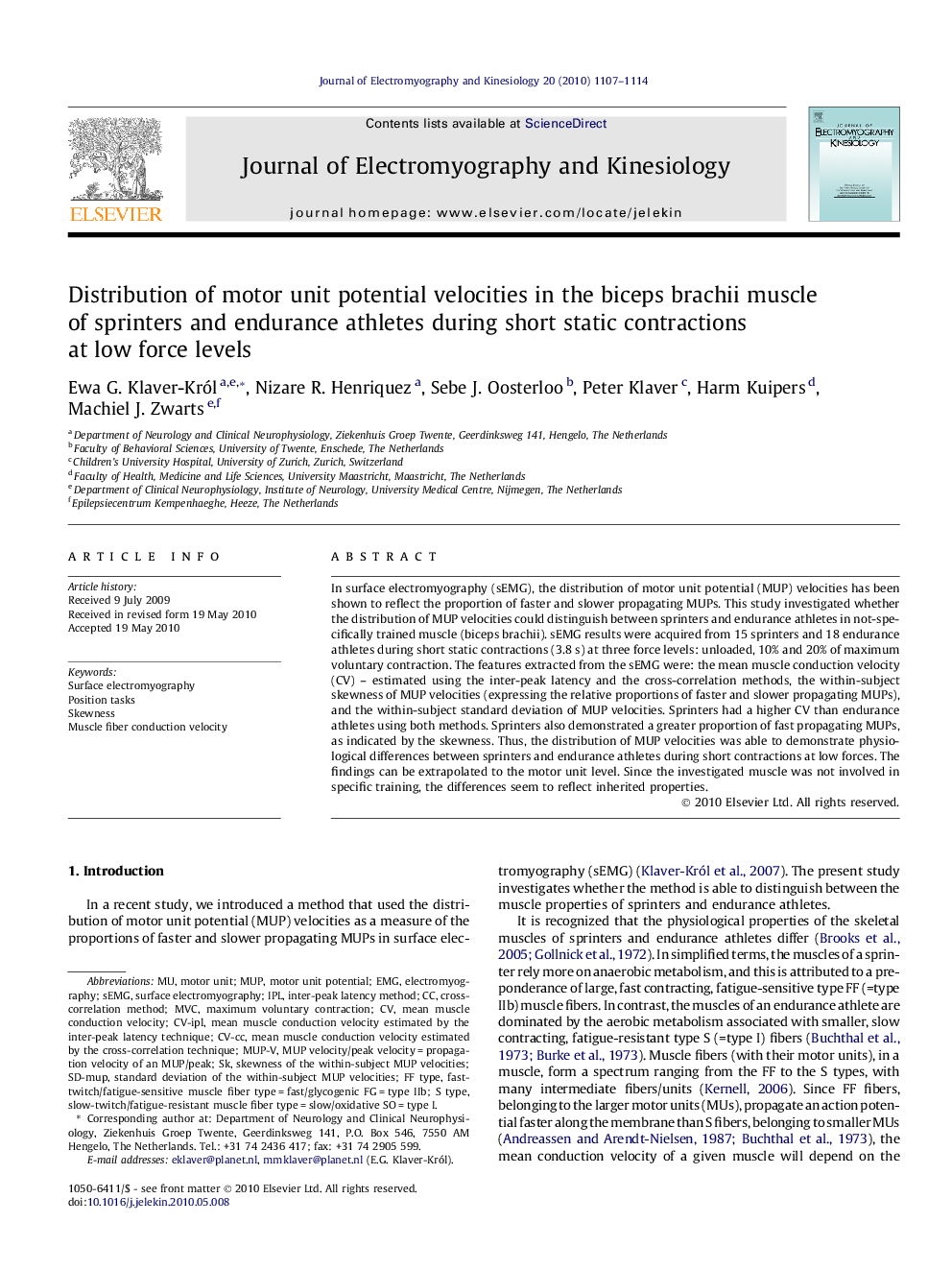| Article ID | Journal | Published Year | Pages | File Type |
|---|---|---|---|---|
| 4064929 | Journal of Electromyography and Kinesiology | 2010 | 8 Pages |
In surface electromyography (sEMG), the distribution of motor unit potential (MUP) velocities has been shown to reflect the proportion of faster and slower propagating MUPs. This study investigated whether the distribution of MUP velocities could distinguish between sprinters and endurance athletes in not-specifically trained muscle (biceps brachii). sEMG results were acquired from 15 sprinters and 18 endurance athletes during short static contractions (3.8 s) at three force levels: unloaded, 10% and 20% of maximum voluntary contraction. The features extracted from the sEMG were: the mean muscle conduction velocity (CV) – estimated using the inter-peak latency and the cross-correlation methods, the within-subject skewness of MUP velocities (expressing the relative proportions of faster and slower propagating MUPs), and the within-subject standard deviation of MUP velocities. Sprinters had a higher CV than endurance athletes using both methods. Sprinters also demonstrated a greater proportion of fast propagating MUPs, as indicated by the skewness. Thus, the distribution of MUP velocities was able to demonstrate physiological differences between sprinters and endurance athletes during short contractions at low forces. The findings can be extrapolated to the motor unit level. Since the investigated muscle was not involved in specific training, the differences seem to reflect inherited properties.
